Signs of the bends. The Bends: Understanding Decompression Sickness Symptoms, Treatment, and Prevention
What are the signs and symptoms of decompression sickness. How is decompression sickness treated. What factors increase the risk of developing the bends. How can divers prevent decompression sickness.
What is Decompression Sickness?
Decompression sickness, commonly known as “the bends,” is a potentially serious condition that can affect scuba divers and other individuals exposed to rapid changes in pressure. It occurs when nitrogen dissolved in the blood and tissues forms bubbles as pressure decreases during ascent from a dive or when leaving a compressed air environment.
These nitrogen bubbles can cause various symptoms by expanding and injuring tissue or blocking blood vessels in multiple organs. The effects can range from mild joint pain to life-threatening complications affecting the brain, spinal cord, and other vital systems.
Types of Decompression Sickness
Decompression sickness is typically classified into two types:

- Type I: Generally milder, primarily affecting joints, skin, and lymphatic vessels
- Type II: Potentially life-threatening, often impacting vital organ systems such as the brain, spinal cord, respiratory system, and circulatory system
What Are the Symptoms of Decompression Sickness?
The symptoms of decompression sickness can vary widely depending on the severity and affected areas of the body. Common signs and symptoms include:
- Fatigue
- Joint and muscle pain
- Numbness and tingling
- Weakness in arms or legs
- Unsteadiness
- Vertigo (spinning sensation)
- Difficulty breathing
- Chest pain
- Skin rashes or itching
- Confusion or memory problems
- Vision changes
In severe cases, symptoms may resemble those of a stroke, including sudden weakness on one side of the body or difficulty speaking. It’s important to note that symptoms can develop gradually, with only half of affected individuals experiencing symptoms within the first hour after surfacing. However, 90% of cases show symptoms within 6 hours.
What Factors Increase the Risk of Decompression Sickness?
Several factors can increase a diver’s risk of developing decompression sickness:

- Depth and duration of dives
- Rapid ascent
- Repetitive dives within a short period
- Flying shortly after diving
- Dehydration
- Cold water
- Obesity
- Older age
- Fatigue
- Certain heart defects (e.g., patent foramen ovale or atrial septal defect)
- Failure to follow proper decompression procedures
Understanding these risk factors is crucial for divers to take appropriate precautions and minimize their chances of experiencing decompression sickness.
How is Decompression Sickness Diagnosed?
Diagnosing decompression sickness relies heavily on a diver’s recent diving history and the presentation of symptoms. Medical professionals will typically follow these steps:
- Detailed dive history: Information about recent dives, including depth, duration, and ascent rate
- Physical examination: Checking for neurological symptoms, joint pain, and other signs
- Neurological assessment: Evaluating balance, coordination, and sensory function
- Imaging studies: CT scans or MRI may be used to rule out other conditions or detect gas bubbles
- Blood tests: To check for markers of tissue damage or inflammation
Early diagnosis is crucial for effective treatment, so divers experiencing any suspicious symptoms after a dive should seek immediate medical attention.

What is the Treatment for Decompression Sickness?
The primary treatment for decompression sickness is recompression therapy, also known as hyperbaric oxygen therapy. This treatment involves:
- Placing the patient in a sealed hyperbaric chamber
- Administering 100% oxygen at high pressures (at least 1.9 atmospheres)
- Gradually decreasing pressure over several hours
Recompression therapy works by reducing the size of nitrogen bubbles and helping to eliminate them from the body. It also provides high levels of oxygen to tissues, promoting healing and reducing inflammation.
Additional Treatment Measures
In addition to recompression therapy, other treatments may include:
- Intravenous fluids to combat dehydration
- Pain medications for symptom relief
- Anti-inflammatory drugs to reduce swelling
- In severe cases, mechanical ventilation or other supportive care
Prompt treatment is essential for the best outcomes. Delays in seeking medical attention can lead to more severe and potentially permanent complications.

How Can Divers Prevent Decompression Sickness?
Prevention is key when it comes to decompression sickness. Divers can take several steps to minimize their risk:
- Follow dive tables or use dive computers to plan dives within safe limits
- Ascend slowly and perform safety stops as recommended
- Avoid pushing the limits of no-decompression diving
- Stay well-hydrated before, during, and after diving
- Limit repetitive dives, especially those approaching decompression limits
- Allow adequate surface intervals between dives
- Avoid flying for at least 12-24 hours after diving
- Maintain good physical fitness and a healthy weight
- Be cautious when diving in cold water or at high altitudes
- Consider using nitrox (enriched air) to reduce nitrogen loading, but be aware of its limitations and risks
By following these guidelines and staying informed about safe diving practices, divers can significantly reduce their risk of experiencing decompression sickness.
What Are the Long-Term Effects of Decompression Sickness?
While many cases of decompression sickness resolve completely with prompt treatment, some individuals may experience long-term effects. These can include:

- Chronic joint pain
- Neurological deficits, such as persistent numbness or weakness
- Cognitive impairments
- Fatigue and reduced exercise tolerance
- Increased susceptibility to future episodes of decompression sickness
The severity and duration of long-term effects can vary widely depending on the initial severity of the condition, the timeliness of treatment, and individual factors. Some divers may need to modify their diving practices or even consider retiring from diving altogether to prevent further incidents.
How Does Decompression Sickness Affect Different Organs and Systems?
Decompression sickness can impact various parts of the body, with effects ranging from mild to severe. Understanding how it affects different organs and systems can help divers recognize potential symptoms and seek timely treatment:
Musculoskeletal System
One of the most common manifestations of decompression sickness is joint pain, often referred to as “the bends.” This pain can affect any joint but is most frequently experienced in the shoulders, elbows, knees, and ankles. The pain may be accompanied by swelling and reduced range of motion.

Nervous System
Neurological symptoms are particularly concerning and can indicate a more severe form of decompression sickness. These may include:
- Numbness or tingling in extremities
- Muscle weakness or paralysis
- Loss of bladder or bowel control
- Cognitive impairment or confusion
- Seizures (in rare cases)
Respiratory System
In some cases, decompression sickness can affect the lungs, leading to symptoms such as:
- Shortness of breath
- Chest pain
- Coughing
- A sensation of breathlessness known as “the chokes”
Cardiovascular System
While less common, decompression sickness can impact the heart and blood vessels. Potential effects include:
- Irregular heart rhythms
- Reduced cardiac output
- In severe cases, heart failure
Skin
Cutaneous manifestations of decompression sickness may include:
- Itching or burning sensations
- Mottled or marbled skin appearance
- Swelling or lymphedema
Understanding these diverse effects underscores the importance of recognizing and promptly addressing any unusual symptoms following a dive.

What Role Does Technology Play in Preventing and Managing Decompression Sickness?
Advancements in diving technology have significantly contributed to the prevention and management of decompression sickness. Some key technological innovations include:
Dive Computers
Modern dive computers have revolutionized recreational and technical diving by providing real-time information on:
- Depth and dive time
- No-decompression limits
- Ascent rates
- Decompression obligations
These devices use complex algorithms to calculate a diver’s nitrogen loading and provide guidance for safe ascent profiles, significantly reducing the risk of decompression sickness.
Mixed Gas Diving
The use of gas mixtures other than air, such as nitrox (enriched air) and trimix, can help reduce nitrogen loading and extend bottom times. However, proper training and understanding of the risks associated with these gases are essential.
Hyperbaric Chambers
Advances in hyperbaric chamber technology have improved the treatment of decompression sickness. Modern chambers offer:

- Better pressure control
- Enhanced patient monitoring capabilities
- Improved comfort for extended treatment sessions
Underwater Communication Systems
Improved communication technology allows divers to stay in contact with their buddies and surface support, enabling faster response to potential problems and better coordination during emergencies.
Wearable Health Monitors
Emerging technologies in wearable devices may soon offer real-time monitoring of a diver’s physiological parameters, potentially providing early warning signs of decompression stress.
While these technological advancements have greatly enhanced diving safety, it’s crucial to remember that they are tools to support, not replace, proper training, experience, and adherence to safe diving practices.
How Does Decompression Sickness Impact the Diving Community and Industry?
Decompression sickness has significant implications for both individual divers and the broader diving community and industry:
Safety Consciousness
The risk of decompression sickness has led to increased emphasis on diver education and safety protocols within the diving community. This focus has resulted in:

- More comprehensive training programs
- Stricter adherence to dive planning and safety procedures
- Greater awareness of the importance of physical fitness and health in diving
Industry Standards and Regulations
The diving industry has developed and implemented various standards and regulations to minimize the risk of decompression sickness, including:
- Certification requirements for divers and instructors
- Guidelines for safe diving practices
- Standards for dive equipment manufacture and maintenance
Economic Impact
Decompression sickness can have economic implications for the diving industry, including:
- Costs associated with treating affected divers
- Potential legal liabilities for dive operators
- Investment in safety equipment and training
Research and Development
The ongoing challenge of preventing and treating decompression sickness drives continued research in areas such as:
- Dive physiology and medicine
- Decompression algorithms and models
- Advanced diving equipment and technologies
Community Support
The diving community has developed strong support networks for those affected by decompression sickness, including:
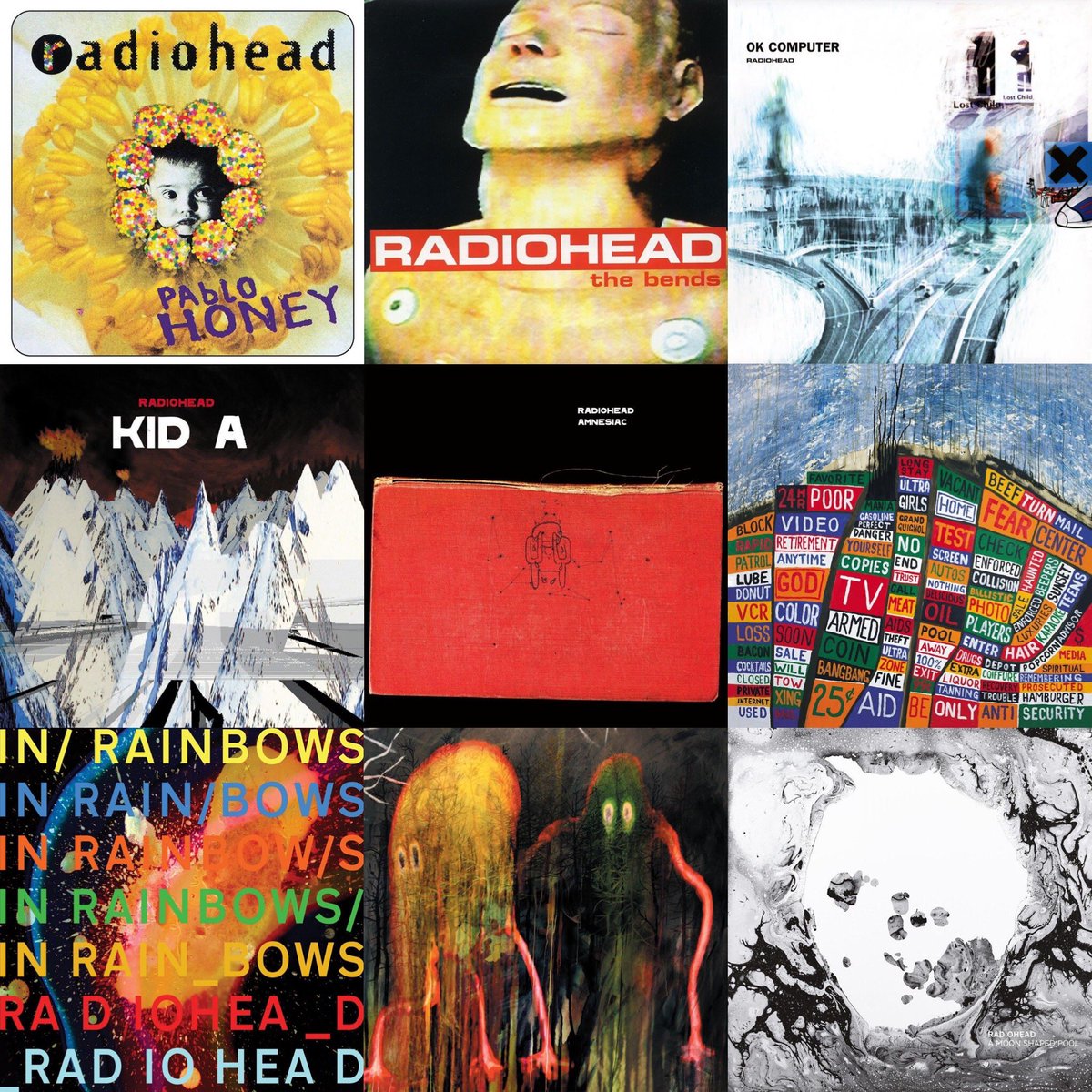
- Online forums and support groups
- Advocacy for improved access to hyperbaric treatment facilities
- Sharing of experiences and best practices among divers
By fostering a culture of safety, continuous learning, and mutual support, the diving community works collectively to minimize the impact of decompression sickness and ensure that diving remains an enjoyable and relatively safe activity for millions of enthusiasts worldwide.
Decompression Sickness – Injuries and Poisoning
By
Richard E. Moon
, MD, Duke University Medical Center
Reviewed/Revised Apr 2023
VIEW PROFESSIONAL VERSION
Decompression sickness is a disorder in which nitrogen dissolved in the blood and tissues by high pressure forms bubbles as pressure decreases.
Symptoms can include fatigue and pain in muscles and joints.
In the more severe type, symptoms may be similar to those of stroke or can include numbness, tingling, arm or leg weakness, unsteadiness, vertigo (spinning), difficulty breathing, and chest pain.
People are treated with oxygen and recompression Recompression Therapy Recompression therapy involves giving 100% oxygen for several hours in a sealed chamber at high pressures (at least 1.
 9 atmospheres). (See also Overview of Diving Injuries.) Recompression therapy… read more (high-pressure, or hyperbaric, oxygen) therapy.
9 atmospheres). (See also Overview of Diving Injuries.) Recompression therapy… read more (high-pressure, or hyperbaric, oxygen) therapy.Limiting the depth and duration of dives and the speed of ascent can help with prevention.
(See also Overview of Diving Injuries Overview of Diving Injuries People who engage in deep-sea or scuba diving are at risk of a number of injuries, most of which are caused by changes in pressure. These disorders also can affect people who work in underwater… read more .)
Air is composed mainly of nitrogen and oxygen. Because air under high pressure is compressed, each breath taken at depth contains many more molecules than a breath taken at the surface. Because oxygen is used continuously by the body, the extra oxygen molecules breathed under high pressure usually do not accumulate. However, the extra nitrogen molecules do accumulate in the blood and tissues.
As outside pressure decreases during ascent from a dive or when leaving a compressed air environment, the accumulated nitrogen that cannot be exhaled immediately forms bubbles in the blood and tissues. These bubbles may expand and injure tissue, or they may block blood vessels in many organs—either directly or by triggering small blood clots. This blood vessel blockage causes pain and various other symptoms, for example, sometimes similar to those of a stroke (such as sudden weakness on one side of the body, difficulty speaking, or dizziness), or even flu-like symptoms. Nitrogen bubbles also cause inflammation, causing swelling and pain in muscles, joints, and tendons.
These bubbles may expand and injure tissue, or they may block blood vessels in many organs—either directly or by triggering small blood clots. This blood vessel blockage causes pain and various other symptoms, for example, sometimes similar to those of a stroke (such as sudden weakness on one side of the body, difficulty speaking, or dizziness), or even flu-like symptoms. Nitrogen bubbles also cause inflammation, causing swelling and pain in muscles, joints, and tendons.
The risk of developing decompression sickness increases with many of the following factors:
Certain heart defects, such as patent foramen ovale or atrial septal defect Atrial and Ventricular Septal Defects Atrial and ventricular septal defects are holes in the walls (septa) that separate the heart into the left and right sides. Holes can be present in the walls of the heart between the upper heart… read more
Cold water
Dehydration
Flying after diving
Exertion
Fatigue
Increasing pressure (that is, the depth of the dive)
Length of time spent in a pressurized environment
Obesity
Older age
Rapid ascent
Failure to follow appropriate decompression procedures
Because excess nitrogen remains dissolved in the body tissues for at least 12 hours after each dive, repeated dives within 1 day are more likely to cause decompression sickness than a single dive.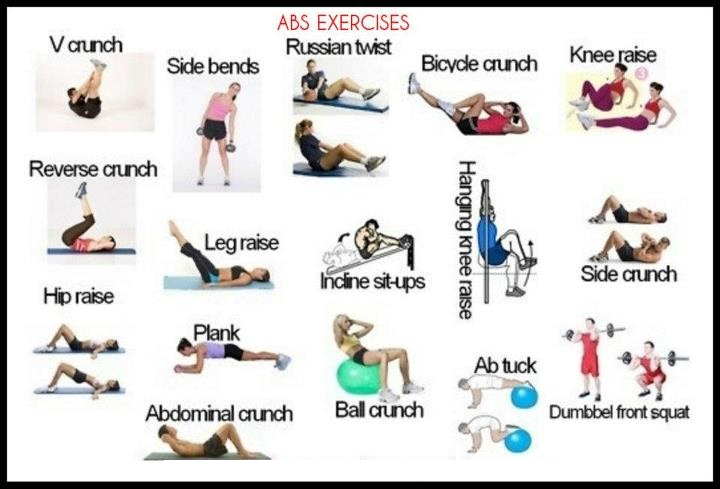 Flying within 12 to 24 hours after diving (such as at the end of a vacation) exposes people to an even lower atmospheric pressure, making decompression sickness slightly more likely.
Flying within 12 to 24 hours after diving (such as at the end of a vacation) exposes people to an even lower atmospheric pressure, making decompression sickness slightly more likely.
Nitrogen bubbles may form in small blood vessels or in the tissues themselves. Tissues with a high fat content, such as those in the brain and spinal cord, are particularly likely to be affected, because nitrogen dissolves very readily in fats.
Type I decompression sickness tends to be mild and affects primarily the joints, skin, and lymphatic vessels.
Type II decompression sickness, which may be life threatening, often affects vital organ systems, including the brain and spinal cord, the respiratory system, and the circulatory system.
Symptoms of decompression sickness usually develop more slowly than do those of air embolism Arterial Gas Embolism Arterial gas embolism is blockage of blood supply to organs caused by bubbles in an artery. It is a leading cause of death among underwater divers, such as scuba divers, who breathe compressed… read more and pulmonary barotrauma Pulmonary barotrauma Barotrauma is tissue injury caused by a change in pressure, which compresses or expands gas contained in various body structures. The lungs, gastrointestinal tract, part of the face covered… read more . Only half of the people with decompression sickness have symptoms within 1 hour of surfacing, but 90% have symptoms by 6 hours. Symptoms commonly begin gradually and take some time to reach their maximum effect. The first symptoms may be
It is a leading cause of death among underwater divers, such as scuba divers, who breathe compressed… read more and pulmonary barotrauma Pulmonary barotrauma Barotrauma is tissue injury caused by a change in pressure, which compresses or expands gas contained in various body structures. The lungs, gastrointestinal tract, part of the face covered… read more . Only half of the people with decompression sickness have symptoms within 1 hour of surfacing, but 90% have symptoms by 6 hours. Symptoms commonly begin gradually and take some time to reach their maximum effect. The first symptoms may be
The less severe type (or musculoskeletal form) of decompression sickness, often called the bends, typically causes pain. The pain usually occurs in the joints of the arms or legs, back, or muscles. Sometimes the location is hard to pinpoint. The pain may be mild or intermittent at first but may steadily grow stronger and become severe. The pain may be sharp or may be described as “deep” or “like something boring into bone. ” It is worse when moving.
” It is worse when moving.
Less common symptoms include itching, skin mottling, rash, swelling of the arm, chest, or abdomen, and extreme fatigue. These symptoms do not threaten life but may precede more dangerous problems.
The more severe type of decompression sickness most commonly results in neurologic symptoms, which range from mild numbness to paralysis and death. The spinal cord is especially vulnerable.
Symptoms of spinal cord involvement can include numbness, tingling, weakness, or a combination in the arms, legs, or both. Mild weakness or tingling may progress over hours to irreversible paralysis. Inability to urinate or inability to control urination or defecation may also occur. Pain in the abdomen and back also is common.
Symptoms of brain involvement, most of which are similar to those of air embolism, include
Headache
Confusion
Trouble speaking
Double vision
Loss of consciousness is rare.
Symptoms of inner ear involvement, such as severe vertigo, ringing in the ears, and hearing loss, occur when the nerves of the inner ear are affected.
Symptoms of lung involvement caused by gas bubbles that travel through the veins to the lungs, produce cough, chest pain, and progressively worsening difficulty breathing (the chokes). Severe cases, which are rare, may result in shock and death.
Dysbaric osteonecrosis (sometimes called avascular bone necrosis) can be a late effect of decompression sickness, or can occur in the absence of decompression sickness. It involves the destruction of bone tissue, especially in the shoulder and hip. Dysbaric osteonecrosis Osteonecrosis can produce persistent pain and disability due to osteoarthritis resulting from the injury. These injuries rarely occur among recreational divers but are more common among people who work in a compressed-air environment and divers who work in deep underwater habitats. There is often no specific initiating event the person can identify as the source of symptoms once they do appear.
There is often no specific initiating event the person can identify as the source of symptoms once they do appear.
These workers are exposed to high pressure for prolonged periods and may have an undetected case of the bends. Technical divers, who dive to greater depths than recreational divers, may be at higher risk than recreational divers. Dysbaric osteonecrosis usually produces no symptoms but if it occurs close to a joint it may gradually progress over months or years to severe, disabling arthritis. By the time severe joint damage has occurred, the only treatment may be joint replacement.
Permanent neurologic problems, such as partial paralysis, often result from delayed or inadequate treatment of spinal cord symptoms. However, sometimes the damage is too severe to correct, even with appropriate and timely treatment. Repeated treatments with oxygen in a high-pressure chamber seem to help some people recover from spinal cord damage.
Doctors recognize decompression sickness by the nature of the symptoms and their onset in relation to diving. Tests such as computed tomography (CT) or magnetic resonance imaging (MRI) sometimes show brain or spinal cord abnormalities but are not reliable. However, recompression therapy is begun before the results of a CT or MRI scan are available, except in cases in which the diagnosis is uncertain or the diver’s condition is stable. MRI is usually diagnostic of dysbaric osteonecrosis.
Tests such as computed tomography (CT) or magnetic resonance imaging (MRI) sometimes show brain or spinal cord abnormalities but are not reliable. However, recompression therapy is begun before the results of a CT or MRI scan are available, except in cases in which the diagnosis is uncertain or the diver’s condition is stable. MRI is usually diagnostic of dysbaric osteonecrosis.
Oxygen
Sometimes recompression therapy Recompression Therapy Recompression therapy involves giving 100% oxygen for several hours in a sealed chamber at high pressures (at least 1.9 atmospheres). (See also Overview of Diving Injuries.) Recompression therapy… read more
The majority of people recover completely.
Divers having only itching, skin mottling, and fatigue usually do not need to undergo recompression, but they should be kept under observation, because more serious problems may develop. Breathing 100% oxygen from a close-fitting face mask is recommended and may provide relief.
Any other symptoms of decompression sickness indicate the need for treatment in a high-pressure (recompression, or hyperbaric oxygen) chamber, because recompression therapy Recompression Therapy Recompression therapy involves giving 100% oxygen for several hours in a sealed chamber at high pressures (at least 1.9 atmospheres). (See also Overview of Diving Injuries.) Recompression therapy… read more restores normal blood flow and oxygen to affected tissues. After recompression, pressure is reduced gradually, with designated pauses, allowing time for excess gases to leave the body harmlessly. Because symptoms may reappear or worsen over the first 24 hours, even people with only mild or transient pain or neurologic symptoms are treated.
Recompression therapy is more beneficial when started quickly. When flying in a plane, the air pressure in the passenger compartment is lower than on the ground, and this pressure difference can sometimes worsen decompression sickness. However, in people with severe symptoms, the benefit of being treated sooner in a hyperbaric chamber is much greater than the risk of not being treated. Experts usually recommend flying in a commercial aircraft, which can be pressurized, or flying at low altitude if the aircraft is unpressurized.
However, in people with severe symptoms, the benefit of being treated sooner in a hyperbaric chamber is much greater than the risk of not being treated. Experts usually recommend flying in a commercial aircraft, which can be pressurized, or flying at low altitude if the aircraft is unpressurized.
Recompression therapy may be beneficial for up to 48 hours or longer after diving and should be given even if reaching the nearest chamber requires significant travel. While awaiting transport and during transport, oxygen is administered with a close-fitting face mask, and fluids are given by mouth or intravenously. Long delays in treatment increase the risk of permanent injury.
Divers try to prevent decompression sickness by avoiding gas bubble formation. They do this by limiting the depth and duration of dives to a range that does not need decompression stops during ascent (called no-stop limits by divers) or by ascending with decompression stops as specified in authoritative guidelines, such as the decompression table in Air Decompression, a chapter in the U. S. Navy Diving Manual.
S. Navy Diving Manual.
The table provides a schedule for ascent that usually allows excess nitrogen to escape without causing harm. Many divers wear a portable dive computer that continually tracks the diver’s depth and time at depth. The computer calculates the decompression schedule for a safe return to the surface and indicates when decompression stops are needed.
In addition to following a table or computer guidelines for ascent, many divers make a safety stop of a few minutes at about 15 feet (4.5 meters) below the surface.
Following these procedures, however, does not eliminate the risk of decompression sickness. A small number of cases of decompression sickness develop after no-stop dives. The persistence of decompression sickness may be because the published tables and computer programs do not completely account for the variation in risk factors among different divers or because some people fail to obey the recommendations of the tables or computer.
Did You Know.
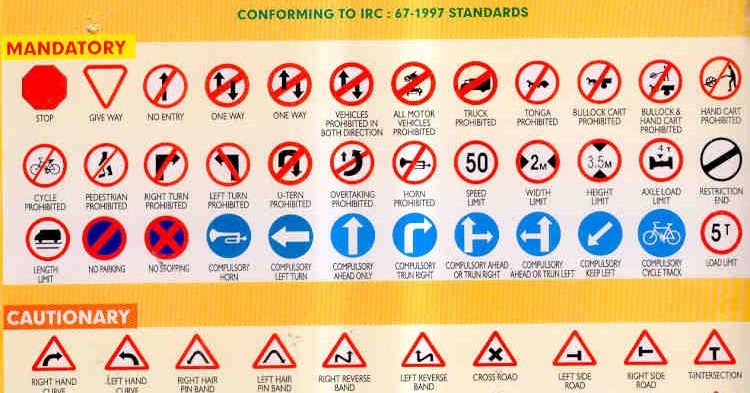 ..
..
Other precautions also are necessary:
After several days of diving, a period of 12 to 24 hours (for example, 15 hours) at the surface is commonly recommended before flying or going to a higher altitude.
People who have completely recovered from mild decompression sickness should refrain from diving for at least 2 weeks. After serious decompression sickness, it is best to wait longer (at least a month) and be evaluated by a physician before diving again.
People who have developed decompression sickness despite following dive table or computer recommendations should return to diving only after a thorough medical evaluation for underlying risk factors, such as a heart defect.
The following English-language resources may be useful. Please note that THE MANUAL is not responsible for the content of these resources.
Divers Alert Network: 24-hour emergency hotline, 919-684-9111
Duke Dive Medicine: 24-hour emergency consultation with a doctor, 919-684-8111
U.
 S. Navy Diving Manual: Detailed reference guide published by the United States Navy detailing diver training and diving operations
S. Navy Diving Manual: Detailed reference guide published by the United States Navy detailing diver training and diving operations
NOTE:
This is the Consumer Version.
DOCTORS:
VIEW PROFESSIONAL VERSION
VIEW PROFESSIONAL VERSION
Copyright © 2023 Merck & Co., Inc., Rahway, NJ, USA and its affiliates. All rights reserved.
Test your knowledge
Take a Quiz!
Decompression Sickness: Symptoms and Treatment of The Bends
Last Updated: Oct, 4, 2018
Every diver is made aware of the dangers of decompression sickness (DCS), or “the bends” as it is more commonly referred to in the scuba diving community. It is one of the scariest possible outcomes of something going wrong on a dive and next to drowning and extreme cases of equipment failure, the most deadly. But the good news is with a solid understanding of what decompression sickness is, the symptoms and treatment protocols, you can drastically reduce the risk of getting bent. This can increase your confidence in your diving abilities and allow you to relax and enjoy your time under the waves. We hope this guide is helpful to the scuba diving community, please feel free to share it with your dive buddy. Understanding the causes and recognizing symptoms of DCS could help save someone’s life!
It is one of the scariest possible outcomes of something going wrong on a dive and next to drowning and extreme cases of equipment failure, the most deadly. But the good news is with a solid understanding of what decompression sickness is, the symptoms and treatment protocols, you can drastically reduce the risk of getting bent. This can increase your confidence in your diving abilities and allow you to relax and enjoy your time under the waves. We hope this guide is helpful to the scuba diving community, please feel free to share it with your dive buddy. Understanding the causes and recognizing symptoms of DCS could help save someone’s life!
What Is The Bends? What Causes Decompression Sickness?
Decompression sickness is caused when a diver ascends too quickly from depth and gas bubbles in the bloodstream expand quickly, which can cause some serious problems. As you dive, various gasses such as Nitrogen are dissolved into your bloodstream and body tissues. The air your are breathing is being compressed due to the increased surrounding pressure of diving at depth, the deeper you go, the more it is compressed, hence why deep dives are normally quite shorter than a shallow reef dive for recreational divers.
The air your are breathing is being compressed due to the increased surrounding pressure of diving at depth, the deeper you go, the more it is compressed, hence why deep dives are normally quite shorter than a shallow reef dive for recreational divers.
As you ascend these dissolved gasses are released into your bloodstream, and if you ascend too quickly they can form bubbles that expand as the pressure in the water around you decreases. This is why it is so important to ascend slowly and perform safety stops. The deeper and longer the dive, the longer your safety stop should be. As you ascend slowly, you will naturally breathe out this excess nitrogen as it is being released slowly as you go up, leaving you with no issues to deal with. This process is called “offgassing”. Rise to quickly from a dive and your body is unable to get rid of these excess gasses properly and they can remain in your bloodstream, causing problems to arise. The expanded gas bubbles can block bloodflow, and apply pressure or even tear nerves in the body. Not very pleasant…
Not very pleasant…
The easiest example to illustrate what is happening is opening a twist top soda bottle. when it is fully sealed, all that liquid and gas is under pressure, but when you start to twist the top open, the pressure inside the bottle is released and you can start to see fizzy bubbles form in the otherwise still liquid and rise to the surface. Open the bottle in a slow, controlled manner and the rate of release is fine. Crank that lid off too fast however and the bottle could easily foam over in an explosion of fizz. This is similar to what can happen with the nitrogen in your blood if you ascend too quickly. A slow and controlled release of the gas is key here.
Why is decompression sickness called the bends? Well, many of the symptoms can be felt in the joint areas of the body, elbows, knees etc. Basically areas of your body that bend. We will dive deeper (no pun intended) into the symptoms below. But first lets look at a few of the more unknown causes of the bends besides ascending to sea level too quickly.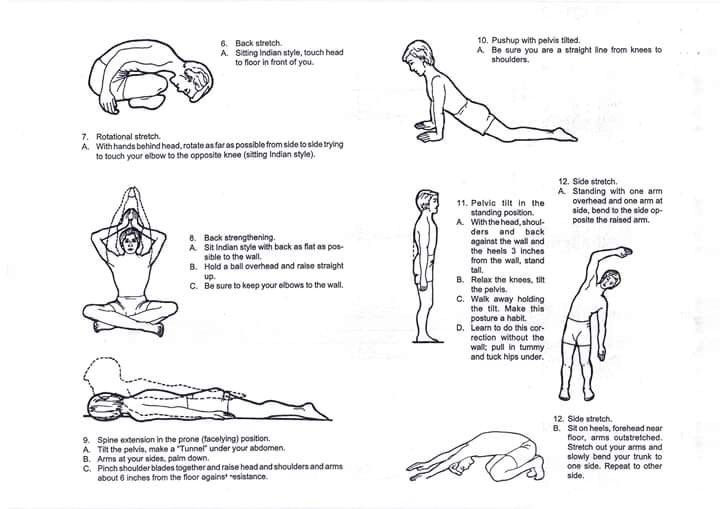
Altitude can play a major factor in causing decompression sickness, both diving in higher altitude sites like mountain freshwater lakes and also flying soon after diving. The lower surface air pressure on higher mountains can actually have quite a dramatic impact on decompression times and need to be taken into account. When it comes to flying, the rapid changes in altitude and pressure inside an airplane can play havoc on your body if there is still excess nitrogen left in your bloodstream. Should the pressure inside the cabin drop to lower than that at sea level, the last of that nitrogen that was under pressure enough to not be a problem at the surface could still expand and cause issues. This is why the rule of not flying within 48 hours your last dive needs to be taken seriously.
Main Causes Of Decompression Sickness:
- Ascending from depth too quickly
- Skipping safety stops on longer or deep dives
- Not using a dive computer to keep you within safety limits / Ignoring your dive computer
- Flying within 48 hours of diving
- Not taking the lower atmospheric pressure of high altitude diving into account
- A large number of dives in a single day (more than 2-3)
Symptoms of Decompression Sickness
..”>With DCS, symptoms will almost always show up within 48 hours of surfacing from a dive. Some of the symptoms can show up within an hour, with most appearing 3-48 hours later. The most prominent symptom of decompression sickness pain in major joints such as the elbows and shoulders, but there are plenty more indicators something is wrong and you might have the bends.Some of the more common symptoms can be intense fatigue after a dive. While some fatigue after a dive can be common in many divers due to the effects of breathing compressed air, intense fatigue could indicate the onset of DCS and be more serious. Especially if the amount of fatigue is disproportionate to the level of exertion from the dive. This can be accompanied by a feeling of weakness or numbness in your extremities such as your arms or legs, with the upper extremities being more common due to the way gasses can rise throughout the body while standing. Other common neurological problems caused by the bends can be dizziness, confusion, loss of consciousness, and problems with balance and general awareness.
Another indicator of DCS is a blotchy rash that can be seen on the skin. This is cause by nitrogen bubbles expanding that are trapped under the surface of the skin, resulting in a red, discolored rash. The rash can be sometimes accompanied by an itching or tingling feeling depending on the severity. If you notice this rash appearing within 48 hours after a dive, be sure to alert a dive professional and get yourself to a hospital and tell them you might have decompression sickness.
The rash that can appear with the bends
In addition to the more common pain in the major joints, pain in the head, neck or chest could indicate a more severe case of decompression sickness and be taken extremely seriously. There is also the possibility of a lung over expansion injury due to holding your breath while ascending, which is a big no no when it comes to scuba diving. If you have pain while breathing in, difficulty breathing, a cough or blue lips and skin this could be a sign of damage to the pulmonary system.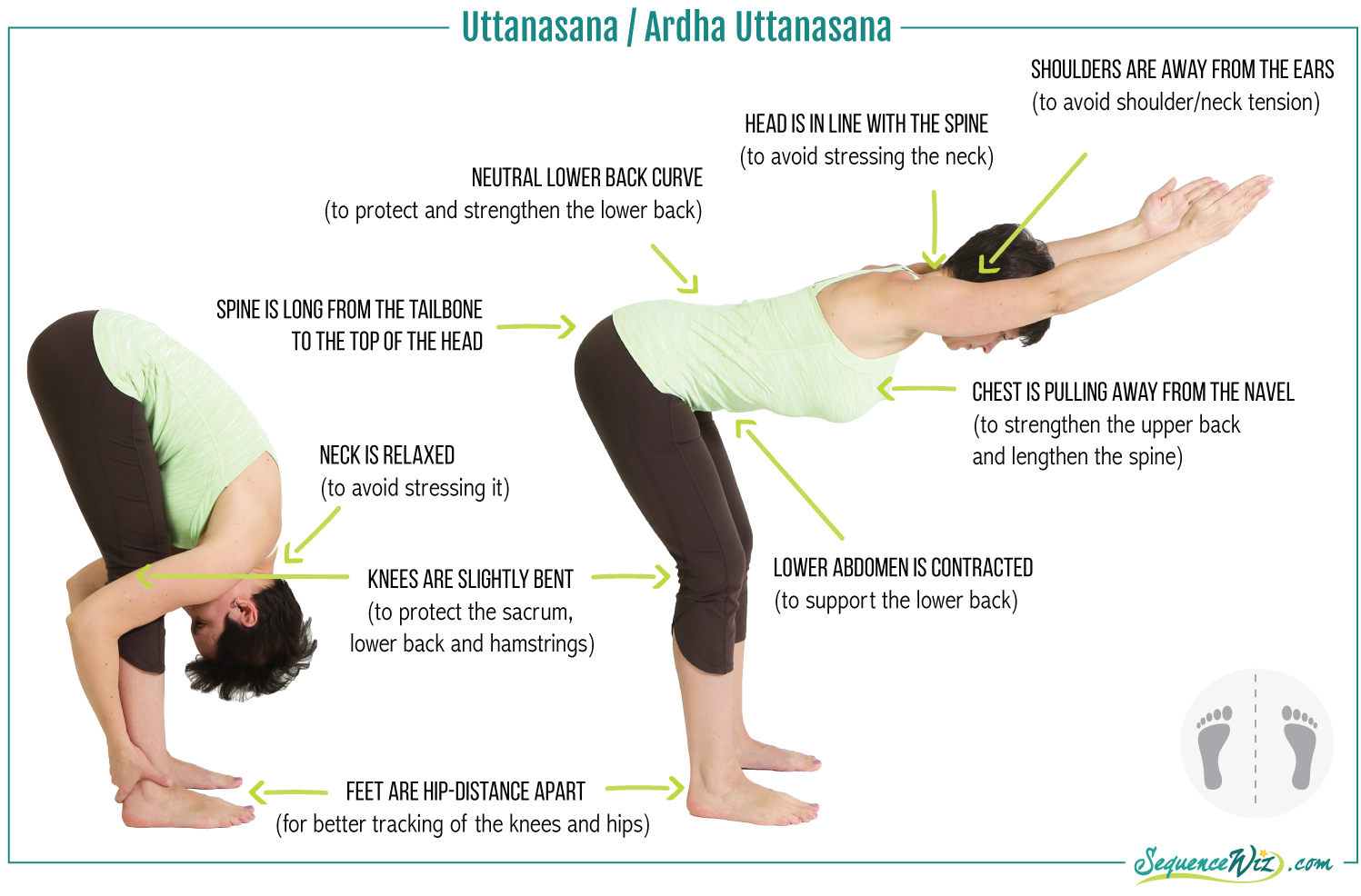 You may also have pain and swelling in the lymph nodes as that is another area that can be effected by the bends.
You may also have pain and swelling in the lymph nodes as that is another area that can be effected by the bends.
If you have any of the potential symptoms of decompression sickness, you need to immediately seek medical assistance, it is better to be safe than sorry. Every dive shop will know where the nearest hospital and decompression chamber facility is and will go out of their way to help you. You can also contact DAN (Divers Alert Network) from anywhere around the globe and they will be happy to assist you and any medical staff unfamiliar with DCS. We would highly recommend their diving insurance, the premium for a year is quite low and it can really save you in an emergency situation.
Symptoms of DCS:
- Extreme Fatigue that is disproportionate to the physical exertion of the dive, vomiting.
- Dizziness, confusion, loss of consciousness, problems with general awareness after a dive
- Loss of balance
- Blotchy, marbled skin rash as pictured above
- Pain in the major joints such as elbows and shoulders, or lower back.
 Can range from a minor tingle to feeling like they are on fire.
Can range from a minor tingle to feeling like they are on fire. - Pain and swelling in the lymphatic system due to decompression sickness
- Pain while breathing in, a cough or blue skin and lips due to lung injury
- Pain in the head, neck or torso can be an indicator of a more serious case of DCS.
Decompression Sickness Treatment
If you or someone in your dive group start showing symptoms of decompression sickness, or have an underwater emergency that requires an emergency or uncontrolled ascent it is imperative you take action right away. DO NOT re-descend to depth and attempt to do a safety stop or offgas underwater. There is chances of a diver losing consciousness due to air embolism or other symptoms and that can have deadly results, it’s better to treat decompression sickness on the surface where there is less variables in play. The diver should be placed and remain in a horizontal position. By doing this you are reducing the risk of gas bubbles rising through the body to the neck, head and brain. This reduces the risk of an air embolism in the brain. If there is vomiting occurring, the diver should be placed on their side in the recovery position to avoid choking.
This reduces the risk of an air embolism in the brain. If there is vomiting occurring, the diver should be placed on their side in the recovery position to avoid choking.
Emergency oxygen should be provided as soon as possible. By breathing 100% pure oxygen you can greatly reduce the effects of the bends, by increasing the oxygen in the bloodstream you can help suppress the effects of nitrogen and other inert gasses. Every dive boat and dive center should be equipped with bottles of emergency oxygen that can be used to help divers with DCS as they are being transported to a medical facility for treatment and monitoring. Divers should be given fluids to decrease the chances of dehydration, which can increase the risk and symptoms of DCS. Another dive or part of the boat crew should take notes of anything that went wrong during the dive, the depth from which the accident or emergency ascent occurred and the length of the dive. The number of dives the effected diver has paticipated in that day should also be taken into account. All this information can help medical professionals diagnose and treat any potential case of DCS.
All this information can help medical professionals diagnose and treat any potential case of DCS.
In some extreme cases, medivac by helicopter might be required.
When being transported it is recommended that the diver is kept horizontal at all times, even if they don’t presently have symptoms. If air transport is required to reach a facility with hyperbaric treatment equipment, it is essential that the aircraft remain below 1000 ft of altitude unless the cabin can be pressurized to that of sea level. This is why helicopter transport is ideal in most long distance transport situations such as diving in the carribean where hyperbaric facilities are few and far between. Sometimes industrial/professional diving vessels with on board chambers have been known to offer their services if they are a closer option. Helicopter transport and hyperbaric treatment is extremely expensive, and this is why we always recommend even casual divers to have DAN insurance, it can literally save you hundreds of thousands of dollars should emergency treatment be required.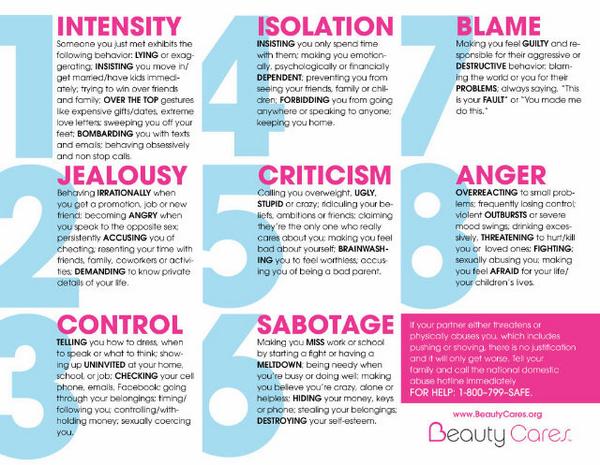
A medical professional will be able to evaluate the severity of any potential decompression situation, and in some cases oxygen therapy might be enough to treat or offset potential symptoms. Even if it was a shallow dive and an emergency ascent occurs, divers should still be provided with emergency oxygen and monitored for symptoms up to 48 hours, even if none appear initially after surfacing. In more serious cases, upon being treated by a medical professional, hyperbaric treatment might be recommended as a precaution, or required due to the severity of the situation.
If it is determined that hyperbaric treatment is required, the diver will be placed in a hyperbaric chamber which is pressurized to simulate the effects of diving at depth, and slowly the pressure is brought back to that at sea level, allowing the diver to offgass while breathing. The length of time spent in the hyperbaric chamber depends on the depth and length of the dive. It could be a couple hours for recreational divers, or even a day or more for technical divers or those working/living at depth for extended periods of time.
DCS can be treated using a hyperbaric chamber
Treatment for the bends:
- Get the diver in a horizontal position, or recovery position if vomiting is occurring
- Immediately begin emergency oxygen treatment by having the diver breathe 100% pure oxygen
- If possible, give the diver fluids to reduce the risk of dehydration which can increase symptoms
- Take notes and record any potential useful information such as maximum depth, dive time and number of dives
- Contact the dive shop and DAN to locate the nearest medical facility with hyperbaric treatment equipment
- Get the diver to a medical professional as soon as possible for evaluation and further treatment
- In some cases hyperbaric treatment may be required to alleviate symptoms and help with recovery
- DO NOT decend to depth again and try to do a safety stop or offgass after surfacing
Lowering Risk and Preventing The Bends
There are quite a few things you can easily avoid and do to vastly decrease the chances of putting yourself in a situation where you would be at risk of getting “bent”.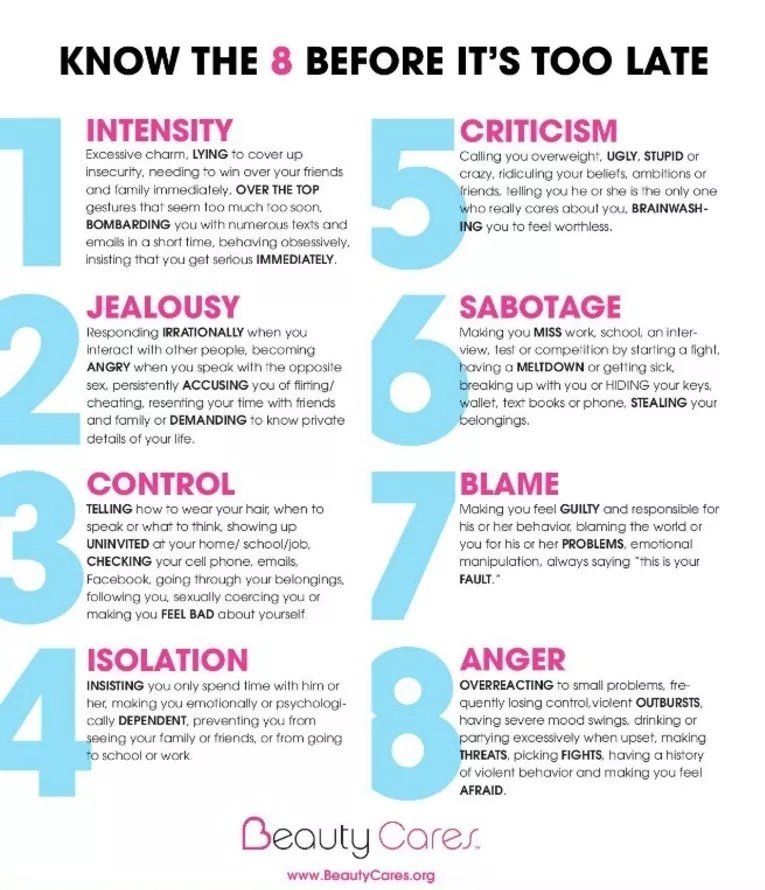 Many of the things that increase your risk factor come into play before a dive even begins, so we will go through pre-dive precautions, things you can do during a dive to avoid the bends and also post dive things many divers don’t take into account. With a little bit of effort, you can dramatically reduce the chances of ever having a bad experience and also boost your confidence in your own diving abilities!
Many of the things that increase your risk factor come into play before a dive even begins, so we will go through pre-dive precautions, things you can do during a dive to avoid the bends and also post dive things many divers don’t take into account. With a little bit of effort, you can dramatically reduce the chances of ever having a bad experience and also boost your confidence in your own diving abilities!
Pre-Dive:
You should be well hydrated before a dive, dehydration can increase the risk of DCS symptoms like blood clots and fatigue, as well as muscle cramps. This is a big reason why it is not recommended to dive while hung over. A big night out before scuba diving the next day can leave your body dehydrated and not in optimal condition for physical exertion. We know the dive community loves to party in paradise but just use a bit of common sense and postpone the partying until after a great day of diving!
Being overweight or having excess body fat can also increase your chances of experiencing decompression sickness. Nitrogen is dis-proportionally stored in fat stores compared to lean muscle mass, as much as 50% more. This means if you have a lot of excess body fat, more nitrogen can build up and be stored over the course of a dive, leading to a larger release upon surfacing. Being physically fit allows you to be more air efficient during a dive as well. All that effort at the gym pays off while scuba diving, think of it as an extra investment in the months before a big dive trip!
Nitrogen is dis-proportionally stored in fat stores compared to lean muscle mass, as much as 50% more. This means if you have a lot of excess body fat, more nitrogen can build up and be stored over the course of a dive, leading to a larger release upon surfacing. Being physically fit allows you to be more air efficient during a dive as well. All that effort at the gym pays off while scuba diving, think of it as an extra investment in the months before a big dive trip!
You really need to plan your dives thoroughly, and dive with experienced divemasters who know the area well. Being familiar with changes in current or surge at a particular dive site can help you plan a fun dive that is within your experience and certification levels. Never attempt a dive that is beyond your current training or comfort zone. Know the exact depth of the dive and make sure all other divers within your group are familiar with any hazards or critical information before you get in the water.
Finally, be sure to thoroughly test all your equipment on the surface before each dive. This is pretty standard operating procedure for most dive operators but it is easy to overlook something. Equipment failure during a dive can lead to an unexpected or emergency ascent, so double checking your scuba gear and knowing it is operating at 100% adds confidence once you descend and allows you to relax and enjoy the underwater world.
This is pretty standard operating procedure for most dive operators but it is easy to overlook something. Equipment failure during a dive can lead to an unexpected or emergency ascent, so double checking your scuba gear and knowing it is operating at 100% adds confidence once you descend and allows you to relax and enjoy the underwater world.
Always thoroughly test your gear before each dive!
During the dive:
During a dive it is important to remain close to your dive buddy. Losing track of your partner can lead to panic or confusion, which can lead to unintentionally ascending too rapidly, which leads to decompression sickness. It is also Important to stick close together in case of equipment failure. It is much better to breathe from your buddy’s secondary regulator and both ascend in a slow controlled manner, than have to bolt to the surface should you run out of air or have another malfunction.
It is also HIGHLY recommended to use a dive computer to keep track of the nitrogen levels accumulating in your body. Computers with a more conservative model are great at helping to ensure an adequate amount of nitrogen has left your system before you surface. Your computer will also warn you if you start to ascend too quickly or forget to make a safety stop. We have some great hands on reviews and recommendations of the best dive computers on the market if you want more info on that.
Computers with a more conservative model are great at helping to ensure an adequate amount of nitrogen has left your system before you surface. Your computer will also warn you if you start to ascend too quickly or forget to make a safety stop. We have some great hands on reviews and recommendations of the best dive computers on the market if you want more info on that.
We highly recommend using a dive computer on every dive!
Finally, always be sure to ascend slowly at the end of a dive, and make a safety stop of at least 3 minutes, even on shorter or shallow reef dives. It is a simple precaution that takes little effort but can really pay off, especially when doing multiple dives in one day. Take some time to just chill and hang out below the surface and offgass while enjoying your surroundings. It’s more fun to be underwater than on the boat anyways!
After the dive:
If everything goes smoothly during your dive, you should be in the clear. Another awesome experience for the log book! By sticking to the plan and using a dive computer, you have brought the chances of experiencing decompression sickness down dramatically. By being aware of the symptoms of the bends, you can quickly identify them should you or another diver start to feel any of them, contact the dive center, DAN or the local medical facilities right away.
By being aware of the symptoms of the bends, you can quickly identify them should you or another diver start to feel any of them, contact the dive center, DAN or the local medical facilities right away.
Finally, like with any dive, be sure to thoroughly rinse all your gear, especially if diving in saltwater. It can be a hassle at the end of a long day of diving, but maintaining your scuba equipment can help it last so much longer and help avoid any failure due to corrosion or damage. After that, kick back on a beautiful beach and watch the sun go down. Just another day in paradise!
Reducing the risk of DCS:
- Start the day by drinking fluids to be properly hydrated by dive time.
- Avoid excessive drinking the night before a dive, diving hungover is not recommended
- Being physically fit with a lower body fat ratio can help avoid excess nitrogen buildup
- Plan your dives thoroughly and know exactly what depth you will be descending to
- Test all scuba gear before diving to reduce the risk of equipment failure mid dive which leads to emergency ascent
- Stick close to your dive buddy in case an emergency should occur.

- Use a dive computer to track your nitrogen levels, dive depth + time and follow the warnings.
- Do a safety stop at the end of every dive, 3 minutes minimum, 5 recommended.
- Be aware of DCS symptoms and be alert after a dive to see if any show up
- Rinse and thoroughly maintain all your dive equipment after every dive
Wrapping it all up
We really hope this article is helpful to anyone just starting out in their scuba diving adventure, or even to experienced vets of the dive community. It is not out intention to fear monger, but to educate divers on how with a few simple precautions, they can greatly reduce the risk of ever encountering decompression sickness.
By observing proper dive procedures, remembering your training and always partnering with divers who have experience with the area, you can almost always guarantee yourself an awesome experience under the waves.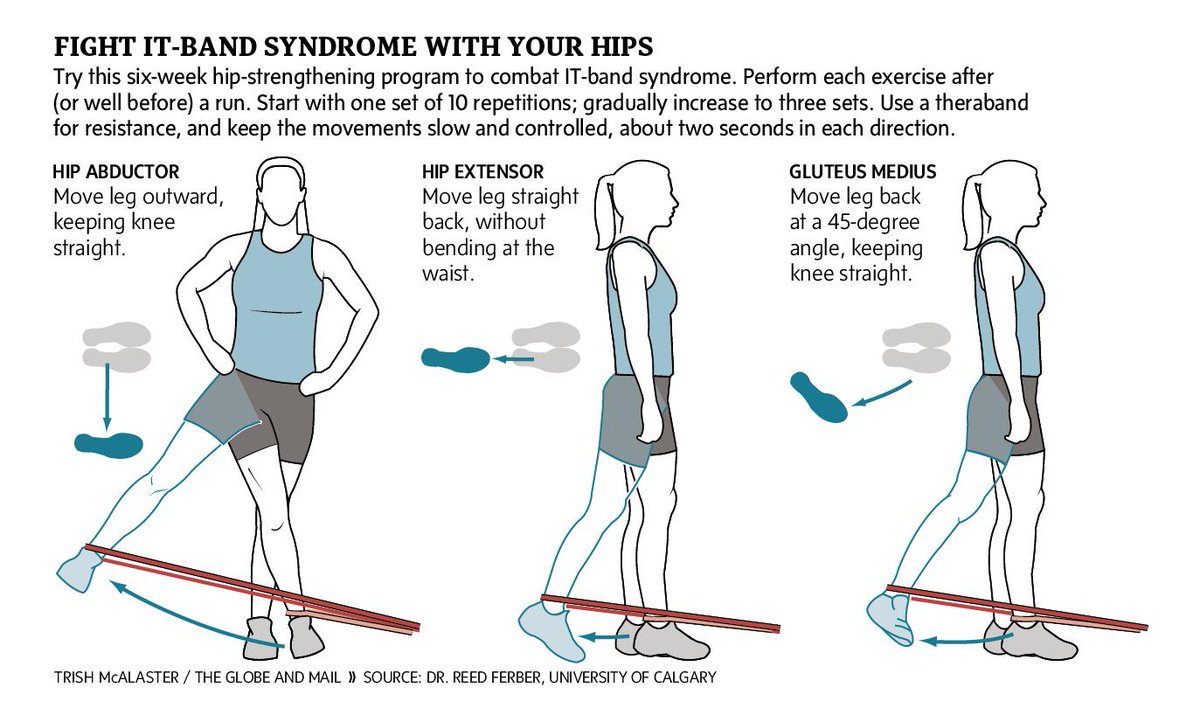 Almost every sport has it’s risks and dangers, but as any experienced scuba diver will probably tell you, getting the chance to explore the ocean far outweighs the potential downsides. Use common sense, proper gear and follow the guidelines set by PADI or other scuba diving organizations and you will be fine! Happy diving everyone!
Almost every sport has it’s risks and dangers, but as any experienced scuba diver will probably tell you, getting the chance to explore the ocean far outweighs the potential downsides. Use common sense, proper gear and follow the guidelines set by PADI or other scuba diving organizations and you will be fine! Happy diving everyone!
Cerebrovascular insufficiency, treatment of HNMK. Pathological deformity of the BCA and tortuosity of the ICA.
Pathological deformation of the BCA (vertebral, carotid) arteries – a congenital or acquired change in the configuration of the brachiocephalic arteries (vessels supplying the brain), leading to a violation of the properties of the blood flow and the development of acute cerebrovascular accident or chronic cerebrovascular insufficiency.
Arteries supplying the brain: subclavian, vertebral, brachiocephalic trunk; common, external and internal carotid are called brachiocephalic (BCA).
Types of pathological tortuosity of the internal carotid artery (pathological tortuosity of the ICA):
The mechanism of blood flow disturbance is easier to imagine when a garden hose is compressed, twisted or kinked – the acceleration of fluid flow and the loss of laminar properties leads to a loss of blood kinetic energy and insufficient blood supply to the brain. Another mechanism is the narrowing of the lumen at the site of the inflection of the artery – septal stenosis, which, under certain conditions, is analogous to stenosis of the vessel lumen in atherosclerosis.
Another mechanism is the narrowing of the lumen at the site of the inflection of the artery – septal stenosis, which, under certain conditions, is analogous to stenosis of the vessel lumen in atherosclerosis.
Pathological tortuosity of the internal carotid artery (tortuosity of the ICA)
Pathological tortuosity of the internal carotid artery (pathological tortuosity of the ICA) is the most common pathology among all BCA deformities.
Narrowing of the arteries supplying the brain with blood, as a result of pathological deformation of the BCA, leads to chronic disorders of cerebral circulation, which is a pre-stroke condition (stroke – cerebral infarction).
Chronic cerebrovascular insufficiency (CHNMK)
This is a state of constant lack of blood in the brain, continuous oxygen starvation of the brain tissue, forcing neurons to be in constant tension of all intracellular systems and intercellular connections, which leads to disruption of the normal functioning of both brain cells and the organ as a whole.
Symptoms of cerebrovascular insufficiency
In almost half of the cases, symptoms are not detected, and tortuosity is found incidentally during examination and duplex scanning of the carotid arteries. Most often, the first manifestations of HNMK are in the form of headaches in the frontal and temporal regions, attacks of dizziness, tinnitus, and memory loss. Slightly less common are more severe neurological disorders – in the form of transient ischemic attacks (TIA), sudden loss of consciousness. The main precursors of the development of a large stroke are TIA, while transient paralysis of the arms and / or legs (from several minutes to several hours), speech disorders, transient or sudden blindness in one eye, memory loss, dizziness, and fainting are possible. Having a TIA is a wake-up call that your brain is in serious danger and you need to get tested and treated as soon as possible.
Causes of HNMK
The cause of pathological deformities of the BCA is genetic and is associated with the incorrect construction of the arterial framework, which consists of structural proteins – collagen and elastin. With age, the tortuosity increases, which often causes complaints in old age, despite the congenital nature of the disease. Pathological tortuosity is inherited!
With age, the tortuosity increases, which often causes complaints in old age, despite the congenital nature of the disease. Pathological tortuosity is inherited!
The main classification of HNMK used in Russia (according to Pokrovsky A.V.) contains 4 degrees:
I degree – asymptomatic course or absence of signs of cerebral ischemia against the background of proven, clinically significant, lesion of cerebral vessels;
- II degree – transient ischemic attack (TIA) – occurrence of focal neurological deficit with complete regression of neurological symptoms within up to 1 hour, transient cerebrovascular accident (TCI) – occurrence of focal neurological deficit and with complete regression of neurological symptoms in terms up to 24 hours;
- III degree — the so-called chronic course of SMN, i. the presence of cerebral neurological symptoms or chronic vertebrobasilar insufficiency without a history of focal deficit or its consequences.
 In neurological systematizations, this degree corresponds to the term “dyscirculatory encephalopathy”;
In neurological systematizations, this degree corresponds to the term “dyscirculatory encephalopathy”; IV degree – previous, completed or complete stroke, i.e. the existence of focal neurological symptoms for more than 24 hours, regardless of the degree of regression of the neurological deficit (from complete to no regression).
Diagnosis of HNMK
- ultrasound duplex scanning of brachiocephalic arteries,
- multispiral computed tomography – angiography of the brachiocephalic arteries,
- angiography of the brachiocephalic arteries.
Treatment of CNMK
With the threat of developing a stroke in the area of blood supply to the artery, surgical treatment is recommended – elimination of tortuosity. The operation refers to standard interventions with a proven technique. The method of elimination is chosen finally at the operation. Method according to Paulukas – reimplantation of the orifice of the internal carotid artery into the common carotid artery, method according to E. Hurwitt – removal of the convoluted area with subsequent restoration of blood flow through the artery. With pathological tortuosity of the vertebral artery – reimplantation of the mouth of the vertebral artery.
Hurwitt – removal of the convoluted area with subsequent restoration of blood flow through the artery. With pathological tortuosity of the vertebral artery – reimplantation of the mouth of the vertebral artery.
- Pathological tortuosity cannot be straightened out by drugs!
- If you or your parents have tortuosity of the carotid arteries – examine yourself and examine your relatives.
In the cardiac surgery department of the Clinic of High Medical Technologies named after. N. I. Pirogov, surgical treatment of pathological deformity of the brachiocephalic (vertebral, carotid) arteries is carried out.
Our surgeons have developed and are using a method for reconstructing arteries in case of pathological tortuosity of the ICA (internal carotid artery) while preserving an important anatomical glomerulus, which leads to a significant decrease in the frequency of postoperative blood pressure instability.
clinic, diagnostics and surgical treatment
According to epidemiological data, the frequency of strokes in different regions of the world ranges from 1 to 4 cases per 1000 population per year.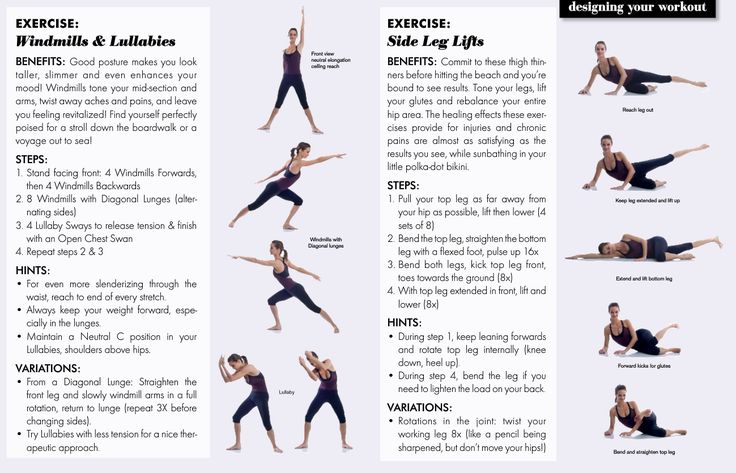 In Russia, this figure is up to 3 cases per 1,000 population per year, being one of the highest in the world. It is also well known that stroke ranks third after myocardial infarction (MI) and cancer among the causes of death [5]. Among all types of strokes, ischemic brain lesions predominate. According to international multicenter studies [9], the ratio of ischemic and hemorrhagic strokes is 5:1. In most cases (60-65%), ischemic stroke (IS) is based on extracranial carotid pathology (ECCP). Atherosclerosis of the arteries of the carotid system is the cause of IS in 80 of these patients [6, 14].
In Russia, this figure is up to 3 cases per 1,000 population per year, being one of the highest in the world. It is also well known that stroke ranks third after myocardial infarction (MI) and cancer among the causes of death [5]. Among all types of strokes, ischemic brain lesions predominate. According to international multicenter studies [9], the ratio of ischemic and hemorrhagic strokes is 5:1. In most cases (60-65%), ischemic stroke (IS) is based on extracranial carotid pathology (ECCP). Atherosclerosis of the arteries of the carotid system is the cause of IS in 80 of these patients [6, 14].
Pathological tortuosity of the internal carotid artery (PI ICA) is the second most common cause of the development of symptoms of cerebrovascular insufficiency (MIS), second only to atherosclerotic lesions of the brachycephalic arteries (BCA) [12].
The consequences of IS are catastrophic – 80% of patients remain disabled, mortality in the acute period is 29-38%, by the end of the first year it reaches 59% [16]. In patients with IS, the risk of its recurrence during the first 30 days is from 5 to 20% (risk factors: severe stenosis, PI, unstable plaque, floating thrombus) [4]. With the development of a recurrent stroke, 40-69% of patients remain disabled, 16-55% die, and only 2-12% recover. All this determines the extreme relevance of the prevention of recurrent stroke [3, 7].
In patients with IS, the risk of its recurrence during the first 30 days is from 5 to 20% (risk factors: severe stenosis, PI, unstable plaque, floating thrombus) [4]. With the development of a recurrent stroke, 40-69% of patients remain disabled, 16-55% die, and only 2-12% recover. All this determines the extreme relevance of the prevention of recurrent stroke [3, 7].
ICA, as a rule, have a rectilinear course and effectively transport blood to the distal parts of the vascular bed. However, the ICA can take on a curved shape due to abnormal embryonic development or acquired pathology [22, 27].
Congenital deformities of the carotid arteries (CA) are more often the result of dysembryogenesis. Disturbances in the formation of the vascular wall, possibly genetically determined, are often combined with tortuosity of the vertebral arteries, valvular defects (CV), congenital aneurysms of cerebral vessels (ACS) [10]. Such changes in the PI site are a response to mechanical trauma created by abnormal blood flow.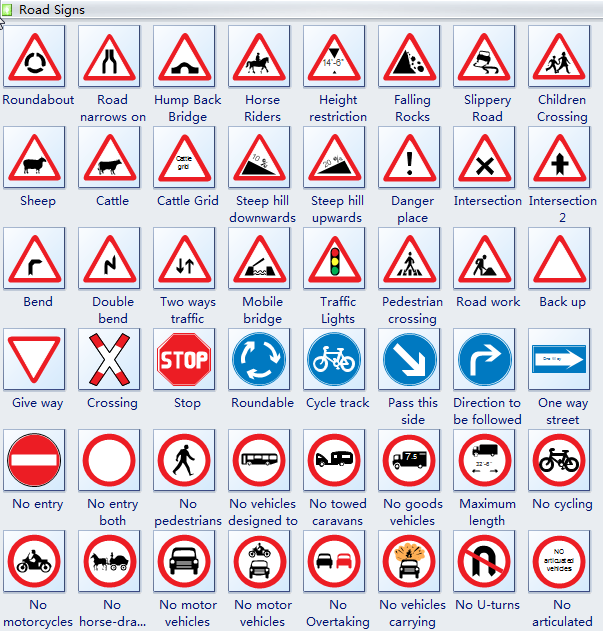 In the intima there is uneven hyperplasia and fibrosis, impregnation with lipids with the development of an atherosclerotic process against the background of instability and configurational anomaly of blood flow [15].
In the intima there is uneven hyperplasia and fibrosis, impregnation with lipids with the development of an atherosclerotic process against the background of instability and configurational anomaly of blood flow [15].
According to different authors [1, 2, 8, 13, 19, 29], in 15-40% of cases, atherosclerotic lesion of the ICA is combined with its PI, which significantly increases the risk of developing acute cerebrovascular accident (ACV).
Considerable experience has been accumulated, but there are still disagreements in determining the optimal examination algorithm and indications for surgery in PI ICA [11].
Despite the obvious progress in reconstructive surgery of extracranial arteries (ECA), there are still many unresolved issues.
To date, no multicenter randomized trial has been conducted in the world that would allow formulating a single standard for the examination and treatment of patients with PI ICA. Therefore, the issue of indications and the choice of the method of surgical treatment is still controversial and is decided individually by each surgeon based on accumulated experience.
The purpose of our study is to choose the optimal method of surgical treatment in patients with isolated PI ICA, as well as in combination with stenosis.
The paper analyzes the experience of surgical treatment of 60 patients (21 men and 39 women, mean age of patients – 59 ± 3 years) with PI ICA, who were in the Department of Vascular Surgery of the Federal State Budgetary Scientific Institution “RSCH named after I.I. acad. B.V. Petrovsky”. In 46 (77%) patients with PI, the ICA was bilateral, in 14 (23%) patients the tortuosity was localized on one side. In the same group of patients, tortuosity + stenosis (stenosis over 60%) was detected in 1/3 of patients.
When assessing the degree of crimp, we used the H. Metz classification modified by Weibel and Fields. Three types of PI ICA have been identified: tortuosity (tortuosity) – C- and S-shaped elongations of the CA; kinking (kink) – at an angle of 90°, coiling (looping) – lengthening of the artery in the form of a loop or spiral [24, 28].![]()
All patients underwent an ultrasound scan of the brachycephalic branches (BCV) of the aortic arch (AA) with an assessment of the form of tortuosity and hemodynamic parameters in the area of arterial deformity. Using color duplex scanning (CDS), we determined the shape of the tortuosity, the distance from the mouth of the ICA to the beginning of the bend, the type of blood flow and its speed characteristics throughout the S.A. Measurement of the linear blood flow velocity (BFR) was performed at 3 points: in the proximal segment in relation to the tortuous section of the artery, in the place of the most pronounced angulation, and in the distal segment in relation to the deformed section of the ICA. The blood flow velocity gradient was also determined (the ratio of the maximum LBF at the height of the bend to the LBF to the level of arterial deformation).
We also performed transcranial Dopplerography (TCDG) monitoring of blood flow in the middle cerebral artery (MCA) at rest before surgery.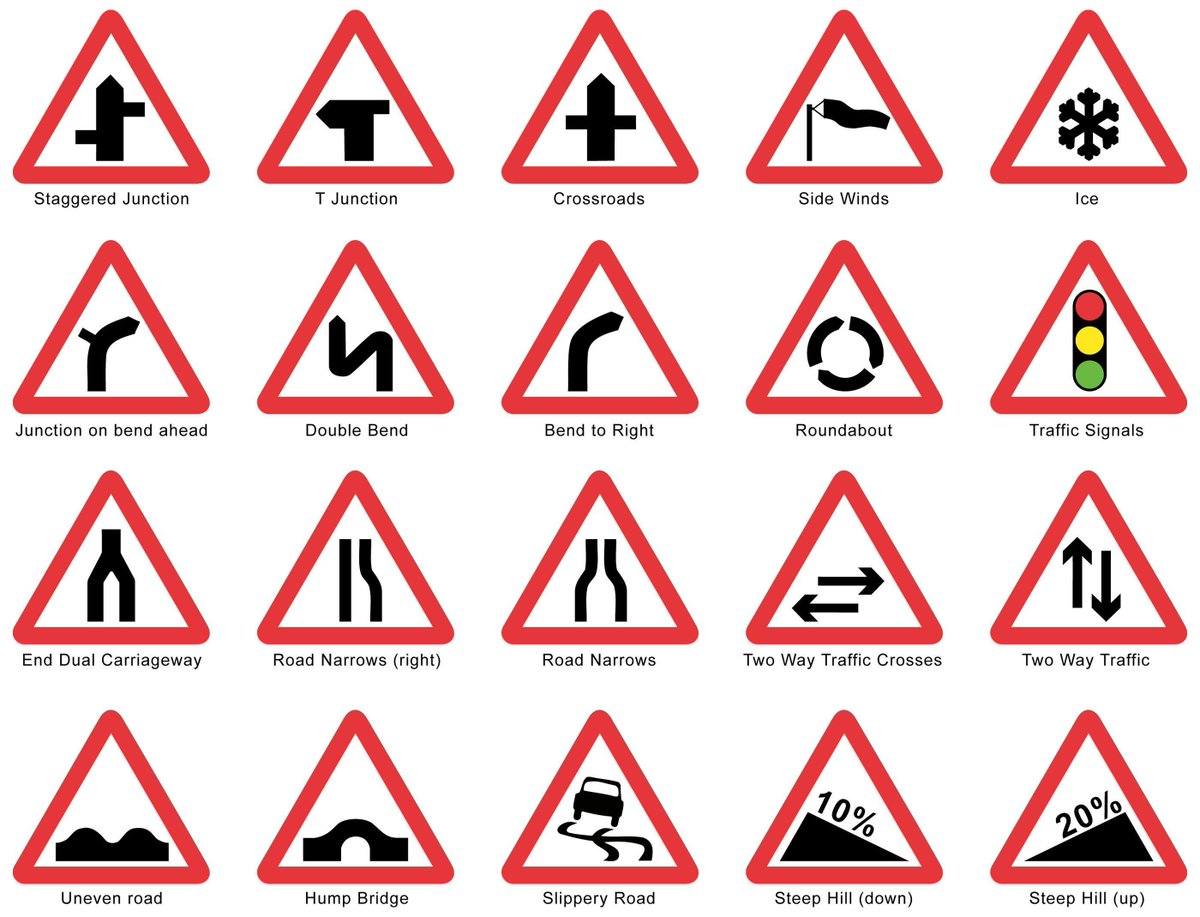 Intraoperative monitoring of blood flow along the MCA was carried out throughout the operation to determine the appropriateness of using a temporary intraluminal shunt (ITS). The indication for its use was a decrease in LBF in MCA less than 0.4 m/s or less than 50% of the baseline when testing the patient’s tolerance to ICA clamping during surgery [17].
Intraoperative monitoring of blood flow along the MCA was carried out throughout the operation to determine the appropriateness of using a temporary intraluminal shunt (ITS). The indication for its use was a decrease in LBF in MCA less than 0.4 m/s or less than 50% of the baseline when testing the patient’s tolerance to ICA clamping during surgery [17].
With closed temporal acoustic windows, it was necessary to resort to an invasive procedure for determining retrograde pressure in the ICA (an indication for the use of the IVS was a decrease in retrograde pressure below 40 mmHg).
To clarify the relative position of the CA, to obtain visual data on the spatial location of the PI of the ICA (in relation to the thyroid cartilage, hyoid bone, angle of the lower jaw), to determine the degree and nature of atherosclerotic lesions, the diagnostic method of multislice computed tomography (MSCT) was used. Magnetic resonance imaging (MRI) of the brain (GM) was also performed with contrasting intracranial arteries, which also made it possible to adequately assess the presence of ischemic foci in the GM and the state of the circle of Willis.
Any configurational anomaly of the vessel (in this case, PI ICA) begins with degenerative changes in the vessel wall. In this regard, all patients underwent postoperative histopathological examination of resected deformed areas of the ICA. Van Gieson staining, resorcinol fuchsin staining, hematoxylin and eosin staining were used.
All patients were examined by a cardiologist, a neurologist with an assessment of the initial neurological status, and also, based on the results of the CDS of the eye vessels, they were consulted by an ophthalmologist.
According to the classification of SMN A.V. Pokrovsky [6], asymptomatic patients were 5 (8%), with a history of transient ischemic attacks – 29 (48%), with chronic MRN – 10 (17%), stroke and remaining neurological deficit – 16 (27%) sick. Initially, 17 (28%) subjects were diagnosed with ocular ischemic syndrome (OIS), 3 of them (18%) were diagnosed with an acute form of OIS. Concomitant hypertension (AH) was observed in more than 70% of patients. When classifying patients depending on the deformity, there were 14 (23%) patients with S-shaped tortuosity, 3 (5%) with C-shaped tortuosity, 18 (30%) with kinking, 5 (8%) with coiling, tortuosity + stenosis – 20 (33%).
When classifying patients depending on the deformity, there were 14 (23%) patients with S-shaped tortuosity, 3 (5%) with C-shaped tortuosity, 18 (30%) with kinking, 5 (8%) with coiling, tortuosity + stenosis – 20 (33%).
The indications for surgical correction of the ICA deformity, in addition to the presence of the SMN clinic, were instrumentally confirmed hemodynamically significant PI of the ICA. In order to determine the compensatory capabilities of the GM, the cerebral perfusion reserve (CPR) of the GM was determined by the TKDG method. In 86% of cases, the reactivity coefficient (CR) was less than 1. The criterion for selecting patients with PI ICA for surgical treatment was an LBF velocity gradient of more than 2 and the presence of turbulent blood flow in the area of arterial tortuosity, detected by ultrasound. Asymptomatic patients with proven hemodynamically significant PI of the ICA were operated on as the first stage before revascularization of the arteries of the lower extremities (LE) due to chronic ischemia, and / or the presence of an embologenically dangerous (ulcerated) atherosclerotic plaque (AP) served as an indication for surgery. When a stenotic lesion of the carotid bifurcation was detected, the nature of the plaque and its embologenicity were assessed. Out of 20 patients with stenosis and tortuosity, heterogeneous hypoechoic AP was detected in 2 (14%) patients, 12 (86%) were diagnosed with heterogeneous hyperechoic AP, and in 8 (67%) of them, the AP was uneven and ulcerated.
When a stenotic lesion of the carotid bifurcation was detected, the nature of the plaque and its embologenicity were assessed. Out of 20 patients with stenosis and tortuosity, heterogeneous hypoechoic AP was detected in 2 (14%) patients, 12 (86%) were diagnosed with heterogeneous hyperechoic AP, and in 8 (67%) of them, the AP was uneven and ulcerated.
Surgical access to the SA was made by incision along the inner edge of the sternocleidomastoid muscle. The volume of access was determined depending on the level of location of the tortuosity, the standard was performed in 82%, with the intersection of the abdomen m . digastricus – in 15%, with dressing a . occipitalis – 3%. The distance of the ICA deformation from the bifurcation during coiling and kinking (Me 3.1 cm) was significantly greater than with tortuosity (Me 2.2).
Depending on the method of choosing a surgical technique, the patients were divided into 2 groups: the 1st group consisted of 36 (60%) patients who underwent resection of the ICA with reduction of the orifice, in the 2nd group, ICA prosthetics were performed in 8 (13%) patients and EE with ICA PI resection and orifice reduction in 16 (27%) patients (Table 1).
Table 1. Reconstruction methods depending on the form of PI BCA
ICA resection technique with lowering of the orifice is optimal when the tortuosity is localized in the proximal or middle section of the artery. There are a number of advantages of this operation: restoration of the lumen of the artery with the creation of a wide mouth with a circular suture that does not lead to its stenosis in the late postoperative period; when PI is combined with stenosis of the ICA orifice, simultaneous elimination of tortuosity and stenosis of the artery and anastomosis with a less altered artery are possible [5]. Another 2 (3%) patients with critical ipsilateral subclavian artery stenosis and permanent still syndrome underwent carotid-subclavian bypass with a synthetic prosthesis in addition to resection of the ICA PI. If it was impossible to adequately straighten the rotated ICA due to severe fibro-degenerative changes in the artery wall, the presence of microaneurysms, and in the case when the vessel diameter was less than 5 mm, ICA prosthetics were performed. The indication for ICA prosthetics in 3 cases was a distally located deformity with the presence of degenerative changes in the artery and/or tissue diastasis after resection of P.I. Another 3 patients underwent ICA prosthetics due to traumatization of the artery wall. The choice of the prosthesis method in 2 patients was associated with the presence of prolonged (tandem) stenosis up to the level of the 2nd tortuosity knee. For prosthetics of the artery, prostheses made of polytetrafluoroethylene (PTFE) with a diameter of 6 mm were used. The average length of the resected segment of the tortuous artery was 1.25 cm. Histological analysis of the resected segment of the ICA revealed fibromuscular dysplasia in 35% of patients, in the remaining cases, the morphological diagnosis was atherosclerosis in various stages of manifestation. ICA clamping time ranged from 14 to 45 min, Me 19.7 min. Moreover, 10 (17%) patients were operated on under the conditions of VVSh. In order to resolve the issue of setting the IVS in 24 (40%) patients, monitoring of cerebral hemodynamics was carried out using TCD, in 33 (55%) patients retrograde BP was measured in the ICA, in 3 (5%) patients, EEG data were oriented.
The indication for ICA prosthetics in 3 cases was a distally located deformity with the presence of degenerative changes in the artery and/or tissue diastasis after resection of P.I. Another 3 patients underwent ICA prosthetics due to traumatization of the artery wall. The choice of the prosthesis method in 2 patients was associated with the presence of prolonged (tandem) stenosis up to the level of the 2nd tortuosity knee. For prosthetics of the artery, prostheses made of polytetrafluoroethylene (PTFE) with a diameter of 6 mm were used. The average length of the resected segment of the tortuous artery was 1.25 cm. Histological analysis of the resected segment of the ICA revealed fibromuscular dysplasia in 35% of patients, in the remaining cases, the morphological diagnosis was atherosclerosis in various stages of manifestation. ICA clamping time ranged from 14 to 45 min, Me 19.7 min. Moreover, 10 (17%) patients were operated on under the conditions of VVSh. In order to resolve the issue of setting the IVS in 24 (40%) patients, monitoring of cerebral hemodynamics was carried out using TCD, in 33 (55%) patients retrograde BP was measured in the ICA, in 3 (5%) patients, EEG data were oriented.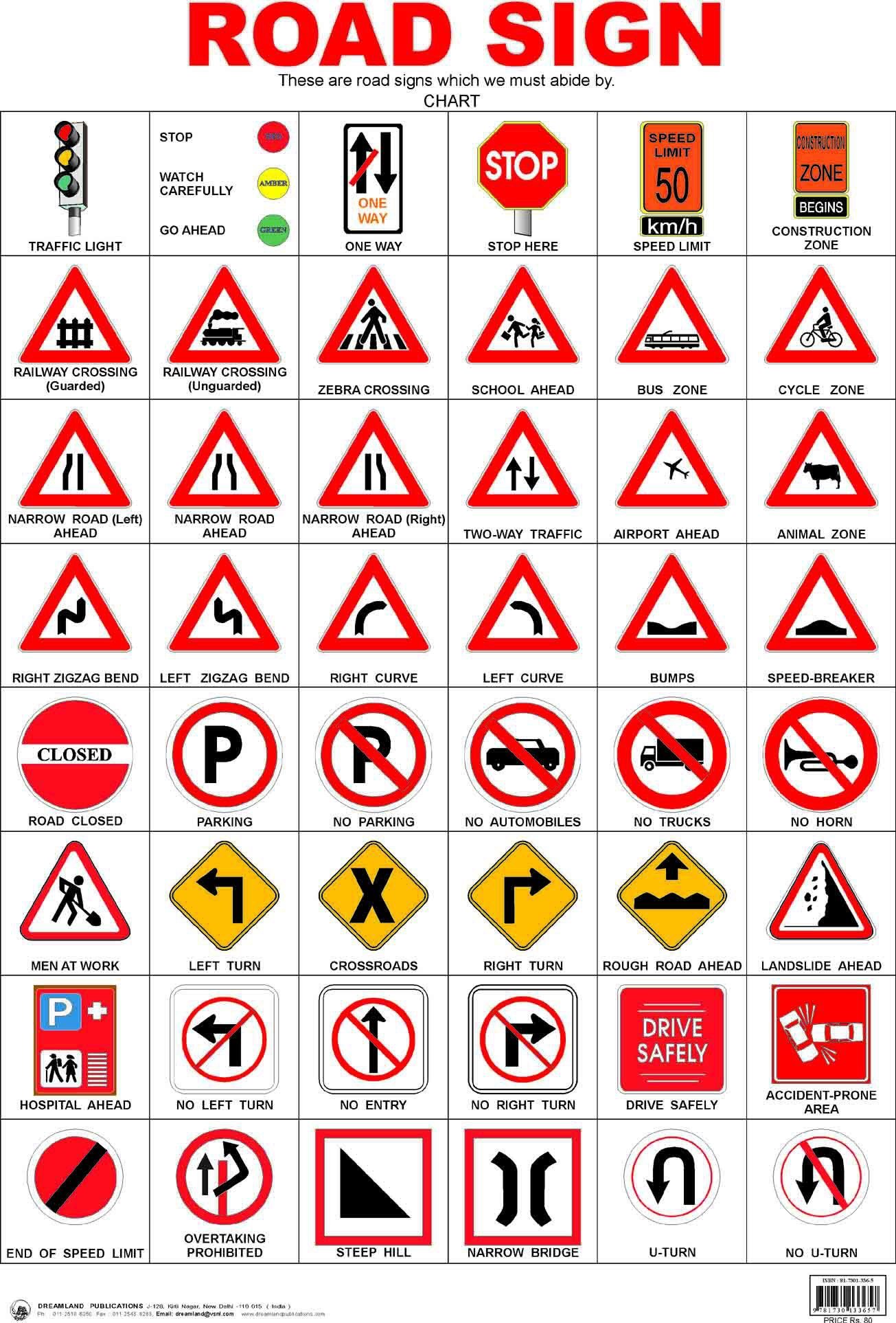 The average time of shunt insertion was 2 min 30 s, removal – 2 min 36 s. The duration of the operation varied from 65 to 155 minutes, Me 95 minutes (Table 2).
The average time of shunt insertion was 2 min 30 s, removal – 2 min 36 s. The duration of the operation varied from 65 to 155 minutes, Me 95 minutes (Table 2).
Table 2. Characteristics of groups of patients before surgery
When analyzing the immediate results, it was found that in the 1st group, the relief of neurological symptoms was achieved in 28 (78%) patients, while in the 2nd positive dynamics was recorded in 15 (62%) patients. All patients with grade CMHI (CMHI) of both groups remained asymptomatic. Due to the absence of a neurological deficit clinic, the result was regarded as an improvement. In 17 (94%) patients of the 1st group with transient circulatory disorders of GM, the phenomena of transient ischemic attacks (TIA) stopped compared to 7 (64%) of the 2nd group. In 4 patients of the 1st group with initial chronic heart failure (CHMN), relief of cerebral symptoms was noted. In the 2nd group, improvement was achieved in 1 (50%) patient with SMNIII. Due to the impossibility of patients with CMHIV with a positive effect after surgery to be assigned to the asymptomatic group, 5 (55%) patients of the 1st group with a history of stroke were transferred to the CMHIII group, in the 2nd group – 2 (29%). On the 7th day after the operation, hemodynamic parameters in the operated ICA were assessed. In patients of both groups, a significant improvement was noted in the form of a decrease in LBF in the zone of reconstructed deformity in the 1st group to 1.0 ± 0.2 m/s compared with the initial 1.78 ± 0.16 m/s and in the 2nd group: 1.69±0.12 vs. 0.78±0.14 ( p >0.05). In 27 (75%) patients of group 1, a laminar type of blood flow was diagnosed in the area of ICA reconstruction, in group 2 only in 13 (54%) patients. There were no strokes and deaths in both groups in the immediate postoperative period. In 1 (4%) patient of the 2nd group, thrombosis was detected, without clinical manifestations of neurological deficit. On the 1st day, 2 (5%) patients of the 1st group and 1 (4%) of the 2nd group had bleeding from the area of the postoperative wound, which required revision and additional hemostasis. In 3 (8.3%) patients of the 1st group, a clinic of peripheral neuropathy of the cranial nerves (CNN) was observed, while in the 2nd group – in 7 (29.
On the 7th day after the operation, hemodynamic parameters in the operated ICA were assessed. In patients of both groups, a significant improvement was noted in the form of a decrease in LBF in the zone of reconstructed deformity in the 1st group to 1.0 ± 0.2 m/s compared with the initial 1.78 ± 0.16 m/s and in the 2nd group: 1.69±0.12 vs. 0.78±0.14 ( p >0.05). In 27 (75%) patients of group 1, a laminar type of blood flow was diagnosed in the area of ICA reconstruction, in group 2 only in 13 (54%) patients. There were no strokes and deaths in both groups in the immediate postoperative period. In 1 (4%) patient of the 2nd group, thrombosis was detected, without clinical manifestations of neurological deficit. On the 1st day, 2 (5%) patients of the 1st group and 1 (4%) of the 2nd group had bleeding from the area of the postoperative wound, which required revision and additional hemostasis. In 3 (8.3%) patients of the 1st group, a clinic of peripheral neuropathy of the cranial nerves (CNN) was observed, while in the 2nd group – in 7 (29. 2%), in 3 (43%) patients, neuropathy was permanent (Table 3).
2%), in 3 (43%) patients, neuropathy was permanent (Table 3).
Table 3. Results of surgical treatment, n (%)
As a result of surgical treatment in 11 (100%) patients with ocular ischemic syndrome (OIS) of the 1st group, relief of ophthalmic symptoms was noted, in the 2nd group, regression was achieved only in 4 (66%) patients ( p <0 .05). In 1 (4%) patient of the 2nd group with MN II degree, 1.5 years after surgery against the background of a hypertensive crisis, hemorrhagic stroke was diagnosed, which led to death. Another 2 (8.3%) patients of the same group were diagnosed with thrombosis of the synthetic ICA prosthesis. In 1 patient, thrombosis was detected on the 5th day after surgery, apparently associated with an error in the anastomosis technique (stenosis of the distal anastomosis). In 2 patients, against the background of self-cessation of oral anticoagulants, thrombosis of the prosthesis was detected after 6 months. At the same time, both patients remained asymptomatic (Table 4).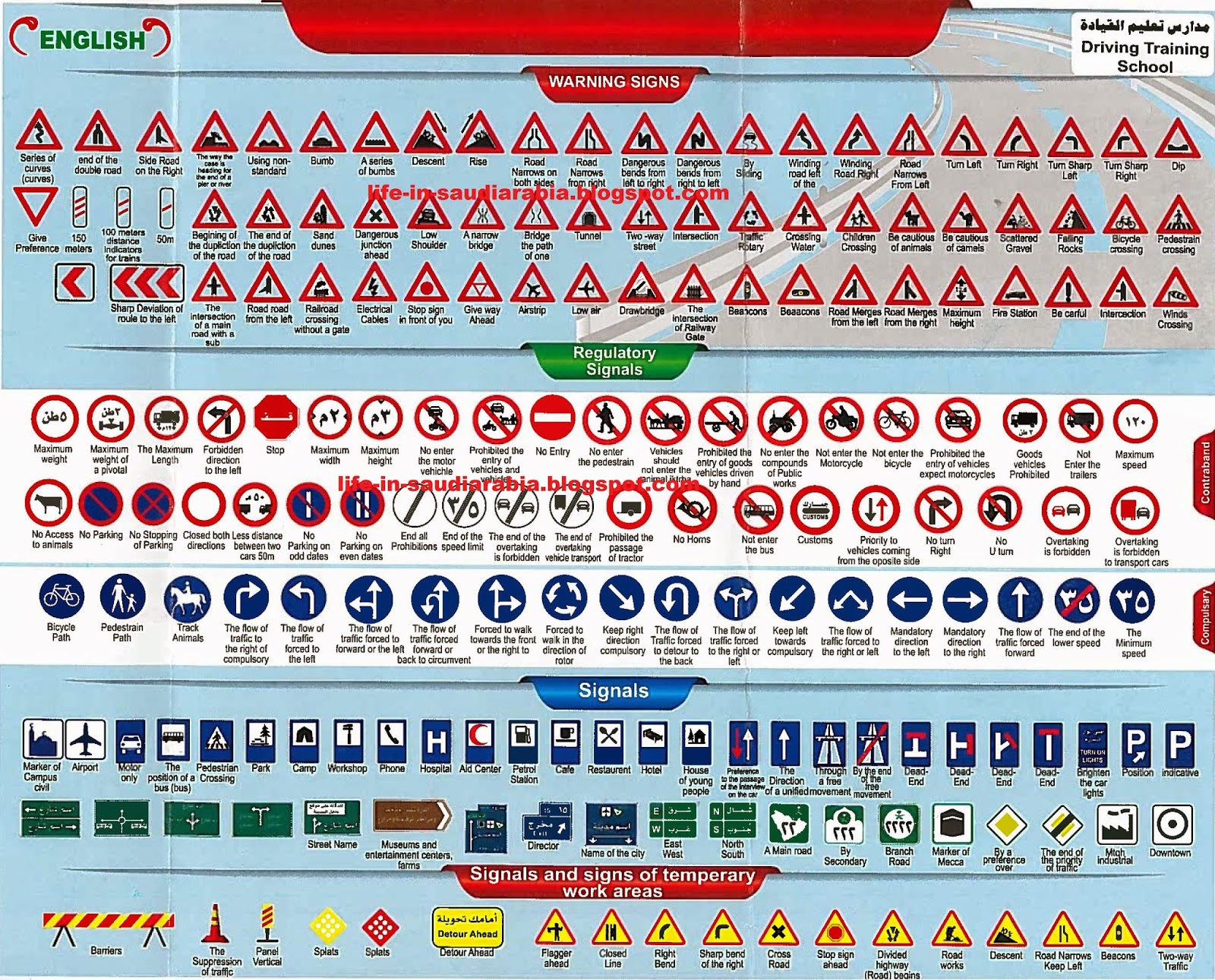
Table 4. Comparative characteristics of patients in groups 1 and 2 before and after surgery, n (%)
When analyzing the immediate results of the operations performed, no significant differences were found in the dynamics of SMN and speed characteristics in the reconstructed ICA ( p > 0.05). In the 2nd group, the indicator “stroke + mortality from stroke” was higher ( p <0.05). Thrombosis of the ICA reconstruction zone developed significantly more often ( p <0.05) after ICA prosthetics (8%) compared with ICA resection with orifice reduction (0%) and EE with ICA PI resection and orifice reduction (0%). ICA clamping time and operation duration were significantly longer in group 2 ( p <0.05). After prosthetics, there was a high frequency of damage to the cranial nerves (10%), while with other methods of reconstruction - no more than 5% (see Table 4).
The results of surgical treatment of PI ICA show that when choosing a surgical method, preference should be given to resection of the PI ICA with lowering of the orifice.

 9 atmospheres). (See also Overview of Diving Injuries.) Recompression therapy… read more (high-pressure, or hyperbaric, oxygen) therapy.
9 atmospheres). (See also Overview of Diving Injuries.) Recompression therapy… read more (high-pressure, or hyperbaric, oxygen) therapy. S. Navy Diving Manual: Detailed reference guide published by the United States Navy detailing diver training and diving operations
S. Navy Diving Manual: Detailed reference guide published by the United States Navy detailing diver training and diving operations:max_bytes(150000):strip_icc()/acute-renal-failure-symptoms-5ae1f536ff1b780036287ecb.png) Can range from a minor tingle to feeling like they are on fire.
Can range from a minor tingle to feeling like they are on fire.
 In neurological systematizations, this degree corresponds to the term “dyscirculatory encephalopathy”;
In neurological systematizations, this degree corresponds to the term “dyscirculatory encephalopathy”;